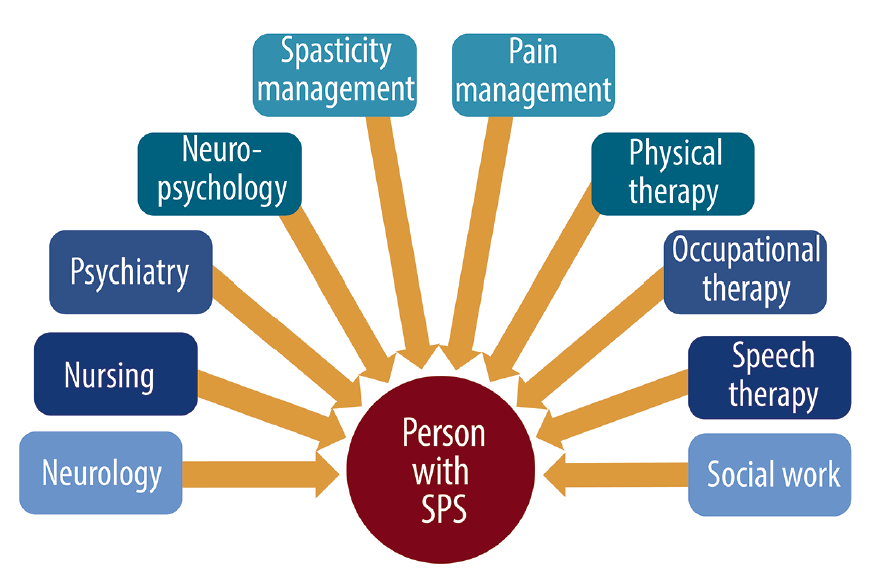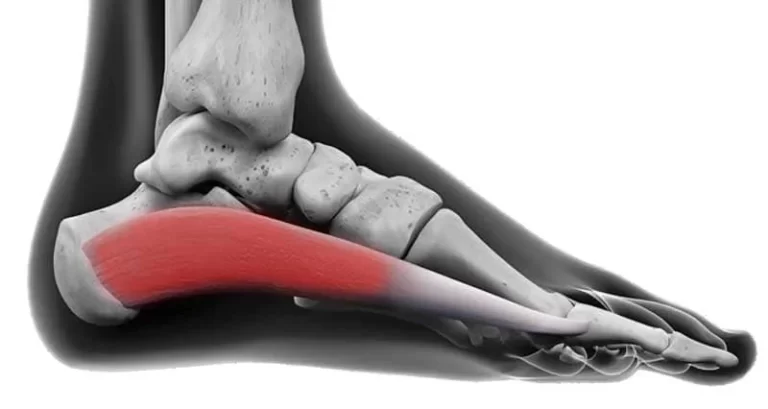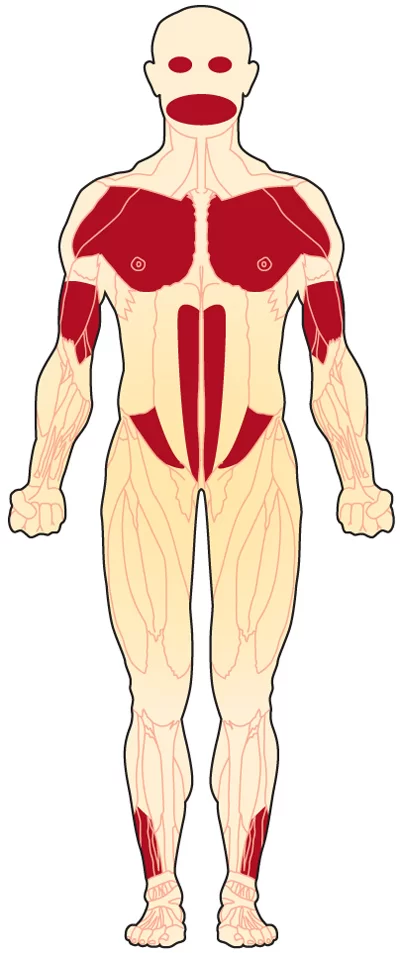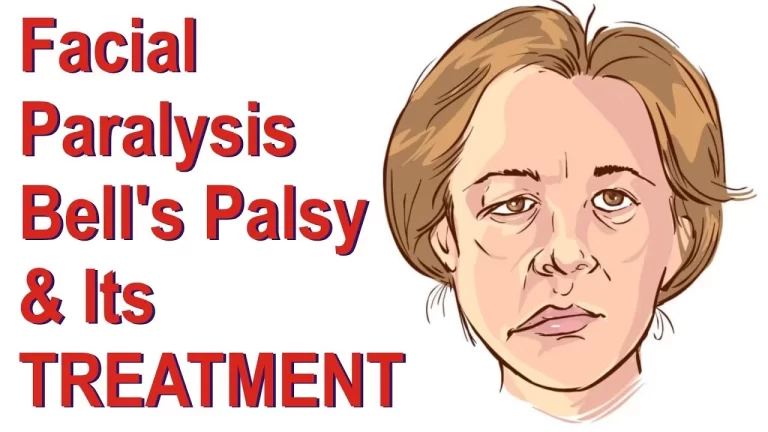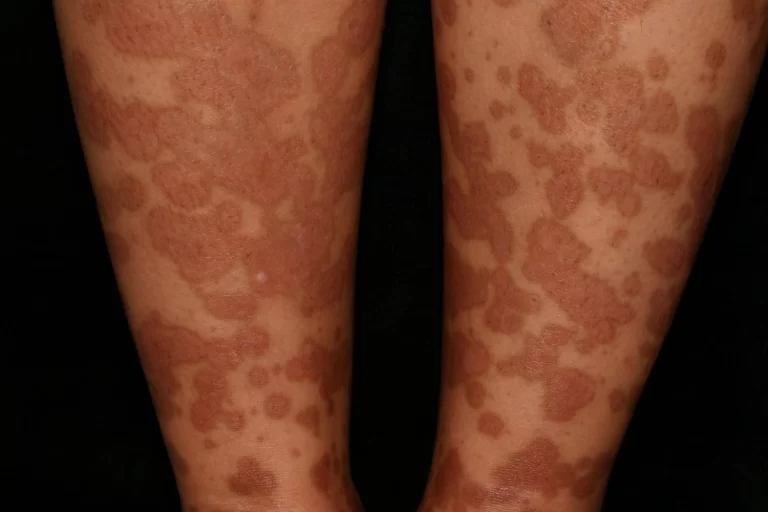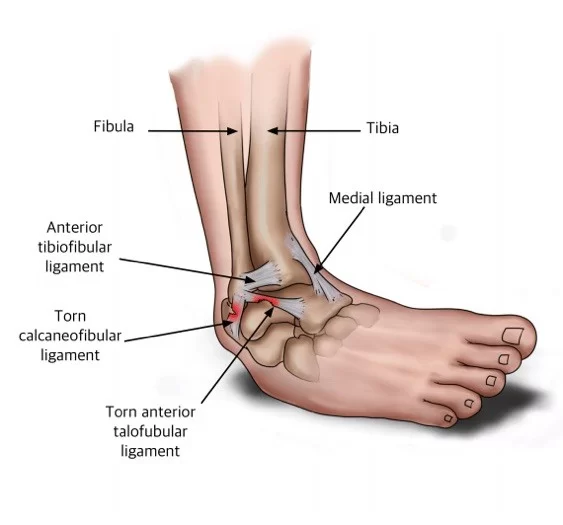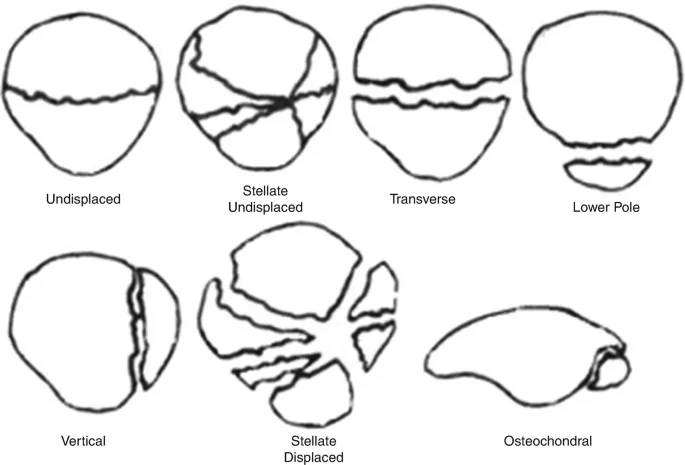Stiff Person Syndrome
What is Stiff Person Syndrome?
Stiff person syndrome (SPS) is a progressive, autoimmune neurological condition.
Patients with this disease generally experience muscle stiffness in their trunk and abdomen (the middle portion of their body). Over time, they also form stiffness (rigidity) and spasms in their legs and different muscles. Walking may evolve hard, and patients evolve more prone to falls and damage.
Stiff person syndrome used to be known as stiff-man syndrome, but the name was modernized to be more inclusive, as the disease can involve patients of any age and sex
Some patients with the disease may also have different autoimmune diseases, like:
pernicious anemia, an autoimmune disease that conducts to a lack of red blood cells
vitiligo is a disease where growing patches of skin lose their pigment
diabetes
celiac condition
Epidemiology
The calculated majority of classic Stiff person syndrome – SPS in general people is 1 to 2 cases per million, with women being involved twice as frequently as men, yet of race. Most peoples create symptoms between the ages of 20 and 60, most generally in their thirties and forties. PERM generally happens in older grown-ups between their fifties and sixties. Just 5% of patients with Stiff person syndrome – SPS have been noted in kids.
Types of stiff person syndrome
Your symptoms may differ relying on the kind of Stiff person syndrome – SPS you have. Further than its traditional presentation, which involves 70% to 80% of patients with Stiff person syndrome – SPS, SPS can show as:
Focal stiff person syndrome: This generally involves just one limb.
Jerking stiff person syndrome (progressive encephalomyelitis with rigidity). This can involve the control of your eye and head muscles.
Progressive encephalomyelitis with rigidity and myoclonus (PERM): Equal to traditional stiff person syndrome but can be associated with cancerous tumors.
Paraneoplastic-related stiff person syndrome: This variant is associated with colon cancer, breast cancer, lung cancer, thyroid cancer, as well as Hodgkin and non-Hodgkin lymphomas. Yet, it tends to exemplify before cancer itself and is generated by various antibodies than classic Stiff person syndrome – SPS.
What are the symptoms of stiff person syndrome?
The two major symptoms of stiff person syndrome are:
Muscle stiffness or rigidity.
Painful muscle spasms.
Stiff person syndrome – SPS symptoms can extend to different regions of your body and/or obtain more harmful over time. Symptoms can bring several months to a few years to evolve. Some patients’ symptoms stay exact for years. Others experience gradually aggravating symptoms, involving more extreme spasticity/rigidity, which can restrict their capability to conduct movements of daily living.
Muscle stiffness
In most circumstances of stiff person syndrome, your trunk (chest, abdomen, and back) muscles are the first to evolve stiff. The rigidity generates pain and an aching discomfort. These symptoms can fluctuate in severity without a precise cause or stimulus. They can also involve your arms and legs. As stiffness gains, some patients form an abnormal posture that can create it hard to walk or move.
Aching muscle spasms are another symptom of Stiff person syndrome – SPS. They can include your whole body or only a precise location. These spasms can stay a few seconds, minutes, or, sometimes, a few hours.
Spasms can be activated by:
- Random or loud noises.
- Physical touch or stimulation.
- Transformations in temperature, involve cold climates.
- Stressful occasions.
Due to the unexpected stimuli of muscle spasms, some patients with Stiff person syndrome – SPS develop anxiety and agoraphobia, and severe fear of entering open or crowded areas or leaving their houses. This is because it’s harder to avoid the stimuli of muscle spasms out in public.
Symptoms of stiff person syndrome contain:
Problem in walking
Falling while walking or standing
Hunched posture
Recurrent attacks of muscle stiffness (rigidity), especially in the trunk and limbs
Painful muscle spasms that can be extended, forceful, and activated by stimuli
What causes stiff person syndrome?
Investigators don’t know the actual reason for stiff person syndrome. But they believe it’s an autoimmune disease, a disease in which your immune system attacks fit cells for unknown causes.
Many patients with Stiff person syndrome – SPS make antibodies against glutamic acid decarboxylase (GAD). GAD plays a function in creating a neurotransmitter known as gamma-aminobutyric acid (GABA), which assists control of muscle motion.
Investigators don’t yet understand the accurate function that GAD plays in the growth and aggravating of Stiff person syndrome – SPS. It’s essential to mention that the actuality of GAD antibodies doesn’t mean that person has Stiff person syndrome – SPS. A small part of the general people has GAD antibodies without any adverse results.
There are further antibodies associated with Stiff person syndrome – SPS, involving glycine receptor, amphiphysin, and DPPX (dipeptidyl peptidase-such as protein 6) antibodies. Some people with Stiff person syndrome – SPS have no observable known antibodies. An investigation is ongoing to see if other potential antibodies haven’t yet been uncovered.
Related conditions
In classic Stiff person syndrome – SPS, which shows in 70 – 80% of people with the disease, people may also have co-existing autoimmune diseases like:
- diabetes
- pernicious anemia
- vitiligo
- thyroiditis
- celiac disease
Investigators have connected the less familiar paraneoplastic variant of Stiff person syndrome – SPS to different cancers, involving:
- thyroid cancer
- colon cancer
- lung cancer
- breast cancer
- Hodgkin lymphoma
- non-Hodgkin lymphoma
Differential Diagnosis
The differential diagnosis for Stiff person syndrome – SPS is wide, and it contains diseases of the spinal cord, brain, and muscles:
- Myelopathy: inflammatory, compressive, ischemic, infectious
- Myopathies and muscular dystrophies
- Idiopathic Parkinson’s condition and Parkinson-plus syndromes
- Autoimmune encephalitis
- Primary lateral sclerosis
- Progressive multiple sclerosis
- Generalized or focal dystonia
- Neuromyotonia
- Isaac syndrome
- Ankylosing spondylitis
- Hereditary spastic paraplegia
- Hereditary hyperekplexia
- Leukodystrophies
- Neuroleptic malignant syndrome, or malignant hypothermia, serotonin syndrome
- Tetanus
- Functional neurological condition
How is stiff person syndrome diagnosed?
Stiff person syndrome can be hard to, as since its irregular and its symptoms are equal to different diseases like ankylosing spondylitis, multiple sclerosis, or different autoimmune diseases. A healthcare provider or doctor may use several examinations to rule out these situations and look for typical signs of stiff person syndrome.
They’ll ask you questions regarding your symptoms and conduct a physical examination and neurological examination. If your provider or doctor doubts stiff person syndrome, tests to verify the diagnosis may contain:
Antibody blood test: A blood examination can study for the existence of antibodies to GAD (or further relevant antibodies) and for different signs that might suggest or rule out other conditions.
Electromyography (EMG): This test estimates electrical activity in your muscles and can assist rule out different reasons for your symptoms.
Lumbar puncture (spinal tap): During a lumbar puncture, a healthcare provider or doctor uses a syringe to draw liquid from your spinal canal to study for the existence of antibodies to GAD. They’ll also look for further signs that might suggest or rule out different situations.
What is the treatment for stiff person syndrome?
Treatment for stiff person syndrome is established on your symptoms. The purpose of therapy is to control symptoms and enhance your mobility and ease.
The two major therapy strategies contain:
- Drugs and therapies for symptom control.
- Immunotherapy, or disease-modifying therapy.
Your healthcare team may contain several specialists, like:
- Neurologists, especially, neuroimmunologists.
- Occupational and physical therapists.
- Physical medicine and rehabilitation specialists.
- Speech therapists.
- Mental health specialists, like psychologists.
- Medications and therapies for symptoms
Medical treatment
Drugs that can assist in the reduction of stiffness, rigidity, and painful muscle spasms contain:
Benzodiazepines: Benzodiazepines are a class of medicines that manage a combination of diseases, like seizures, anxiety, and insomnia. They involve GABA signals. Healthcare providers or doctors frequently prescribe diazepam as a first-line therapy for Stiff person syndrome – SPS.
Muscle relaxants: Baclofen can assist manage muscle spasms. It functions by loosening your muscles, which decreases muscle stiffness.
Neuropathic pain medications: Drugs such as gabapentin and pregabalin also involve GABA signals and can assist with Stiff person syndrome – SPS symptoms.
There’s some proof to indicate that intravenous immunoglobulin (IVIg) therapy (a variety of immunotherapy) can enhance symptoms for some patients with Stiff person syndrome – SPS.
IVIg includes immunoglobulins (natural antibodies your immune system creates) contributed by thousands of patients with fit immune systems.
Physiotherapy treatment
It is essential to mention that physical therapy could aggravate symptoms of Stiff person syndrome – SPS during specific stages of the condition; the usefulness of physical therapy is highly irregular, and specific protection should be accepted before moving with therapies.
Physical therapy includes:
Deep tissue myofascial methods
Ultrasound
Passive range of movement (any kind of contractile activity can reproduce or aggravate symptoms), and
Heat therapy or maybe hydrotherapy, like any kind of cold therapy, can aggravate symptoms
Finally, physical therapy should be tailored to the person with Stiff person syndrome – SPS, as persons may present in various ways. It is necessary to comply with personal plans, understand symptom stimuli, and assist in the finest way likely to decrease pain and improve the quality of life in those living with Stiff person syndrome – SPS.
Living with stiff person syndrome
In addition to medicine, a patient may satisfy with physical therapy. This may assist enhance muscle tone, posture, and range of movement.
Patients with Stiff person syndrome – SPS frequently develop mental and emotional symptoms alongside biological symptoms, which can significantly impact their quality of life.
A patient should aim for assets and therapy for depression, anxiety, and fear of the external world. This generally consists of:
the drug, like antidepressants
psychotherapy
seeking help from family members and friends
Complications of Stiff Person Syndrome
Stiff person syndrome (SPS) induces muscle spasms. These issues can hamper your daily life. You may experience issues involving:
- Often falling from standing
- Extreme anxiety and depression
- Extreme sweating
- Broken bones
- Hunching over
- Emotional distress
The Prognosis for Stiff Person Syndrome
Because of your deficiency of equilibrium, you’re more probable to fall if you have this disease. This raises your possibility of suffering damages and perhaps evolving ever-disabled.
The prediction for stiff person syndrome differs according to the person’s symptoms.
Also, the severity of the syndrome and the rate of falls differ from patient to patient.
Everyone responds differently to a treatment. For instance, some Stiff person syndrome – SPS-involved patients react well to medications and physical therapy. But further may not react as well.
Contact your doctor or physician if you obtain muscle spasms or immobility in your arms, trunk, or legs. If you have any of the risk elements, speak to your doctor or physician regarding stiff person syndrome.
You could also contact a local university or tertiary medical camp. These organizations have numerous up-to-date technologies in the area of irregular conditions.
You can see additional related data at the National Institute of Neurological Disorders and Stroke. This organization gathers and confirms all problems linked to Stiff person syndrome – SPS.
FAQ
Is stiff person syndrome curable?
Stiff person syndrome (SPS) is an irregular chronic disease that induces muscle stiffness and aching muscle spasms. The severity of symptoms differs from someone to someone. There’s no treatment for Stiff person syndrome SPS, but therapy can assist control symptoms and delay the progression of the syndrome.
What is the life longing for stiff person syndrome?
The life longing for a person with Stiff person syndrome – SPS varies from 6 to 28 years from the onset of the disease.
Is stiff person syndrome serious?
Without therapy, stiff person syndrome can generate more extreme symptoms like spasms that restrict mobility, raise the chance of falls with injuries and decrease quality of life. Currently, Stiff person syndrome – SPS therapy addresses symptoms but does not destroy the reason.
What is the best diet for stiff person syndrome?
A gluten-free diet (a nutritional program that exactly excludes gluten, which is a combination of proteins seen in wheat) was a useful intervention for persons with stiff person syndrome (an autoimmune disorder that involves the nervous system).
How do I know if my stiff person syndrome – SPS is healthy?
Typical symptoms of good fitness are well-colored, fleshy branches and polyp extension. Corals can be fit without polyp extension but that’s generally the matter just if there are fish that bother or nip Stiff person syndrome – SPS or if it is only one of those species that only does not spread polyps much.

